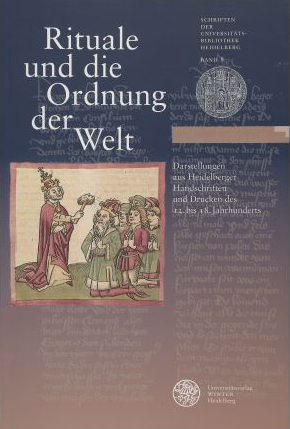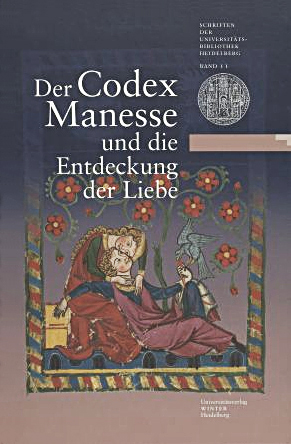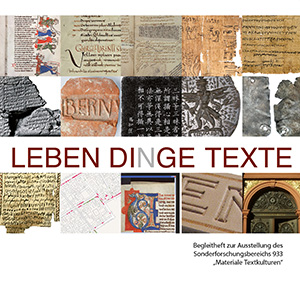Meyer, Carla
Rituale und die Ordnung der Welt: Darstellungen aus Heidelberger Handschriften und Drucken des 12. bis 18. Jahrhunderts
Rituals establish order in this world. This is particularly true for eras such as the Middle Ages and the early modern period, when no written constitutions, codes of law and administrative rules regulated human cohabitation. By being repeatable, symbolically charged acts, rituals did not only illustrate social order and legitimate rule but created authority, priority and hierarchy in the first place. The importance of rituals for European societies of the pre-modern era becomes evident when considering the attention that is paid to them by contemporary writers and artists. This volume is dedicated to the power of the ritual within politics, religion, society and law which is illustrated by the illuminated manuscripts, woodcuts and prints of the 12th to the 18th century from the vaults of Heidelberg University Library.
Der Codex Manesse und die Entdeckung der Liebe: Eine Ausstellung der Universitätsbibliothek Heidelberg, des Instituts für Fränkisch-Pfälzische Geschichte und Landeskunde sowie des Germanistischen Seminars der Universität Heidelberg zum 625. Universitätsjubiläum
Saget mir ieman, waz ist minne? (Tell me, what is love?) This question, asked by the poet Walther von der Vogelweide inquires about the nature of love and has occupied many travelling singers, noblemen, and even clerics since the High Middle Ages. A variety of texts and images bear witness to the fact that it was no longer enough for a knight to possess the desired lady. He rather strived to win her heart. The many-voiced discovery of the topic of “Minne”, i.e. courtly love, as erotic attraction between man and woman did not just influence the relation between the sexes, it also changed the self-conception of the nobility, and the manners within the courtly society.
The songs and images in Codex Manesse capture this change. The magnificent large-format manuscript is a unique collection of works of Minnesang, offering a large variety of genres and forms, dating from the time of the Staufen dynasty to the post-classical era. The miniatures depicting the poets within courtly scenes, festivities and tournaments, have for a long time shaped the modern perception of the chivalrous Middle Ages. However, the Codex Manesse itself can be interpreted as a historical review: Its aim was to create a written compilation of fading songs which were until then passed on orally. Without this record many texts would be lost today.
By presenting Codex Manesse and other valuable manuscripts from the vaults of Heidelberg University Library, the catalogue illustrates the discovery of love during the High Middle Ages.
More information and "Virtual Exhibition"
Leben Dinge Texte: Begleitheft zur Ausstellung des Sonderforschungsbereichs 933 „Materiale Textkulturen“
The exhibition "LEBEN DINGE TEXTE" (LIFE OBJECTS TEXTS / LIVING TEXT) presents artefacts that are inscribed. The exhibits originate from societies before the invention of printing: cuneiform script clay tablets from Mesopotamia, ancient graffiti, magical papyrus amulets, stamped roofing tiles, a dog leash superscribed with gemstones. Such "script bearing" artefacts can help investigate how the writing material affects the meaning of the text and vice versa. Furthermore, they illustrate that writing was not only for reading, but also associated with acts and rituals.
With this exhibition, the Collaborative Research Centre (SFB) 933 "Material text Cultures" presents intermediate results of its research. SFB 933 is funded by the Deutsche Forschungsgemeinschaft (German Research Foundation) and unites 50 researchers and scholars of Heidelberg University and Hochschule für Jüdische Studien Heidelberg.





